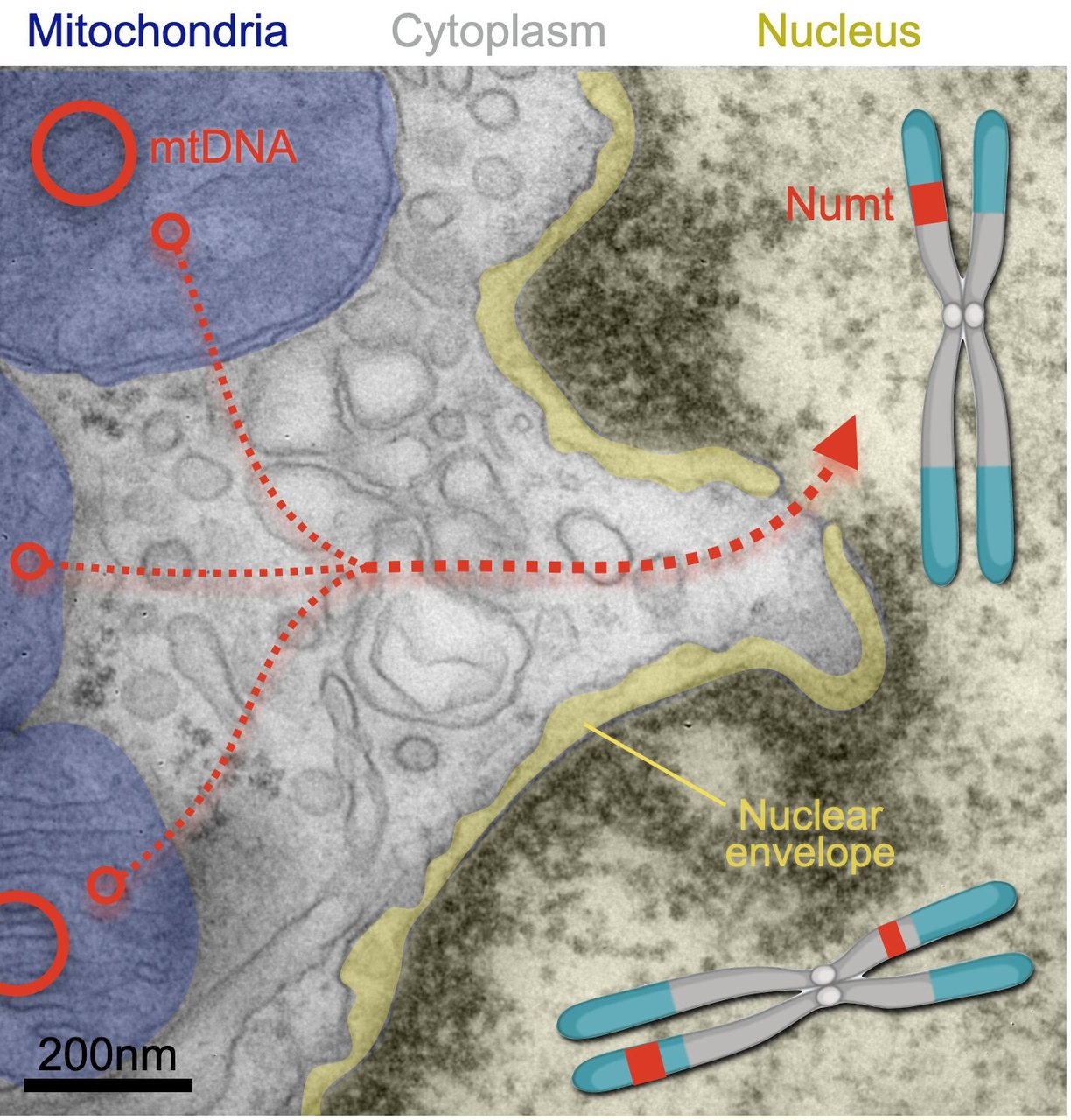
NUMT, pronounced "new might", is an acronym for "nuclear mitochondrial DNA" segment coined by evolutionary geneticist, Jose V. Lopez, which describes a transposition of any type of cytoplasmic mitochondrial DNA into the nuclear genome of eukaryotic organisms. More and more NUMT sequences, with different size and length, in the diverse number of Eukaryotes, have been detected as more whole genome sequencing of different organisms accumulates. In fact, NUMTs have often been unintentionally discovered by researchers who were looking for mtDNA (mitochondrial DNA). NUMTs have been reported in all studied eukaryotes, and nearly all mitochondrial genome regions can be integrated into the nuclear genome. However, NUMTs differ in number and size across different species. Such differences may be accounted for by interspecific variation in such factors as germline stability and mitochondria number. After the release of the mtDNA to the cytoplasm, due to the mitochondrial alteration and morphological changes, mtDNA is transferred into the nucleus by one of the various predicted methods and are eventually inserted by double-stranded break repair processes into the nuclear DNA (nDNA). Not only has any correlation been found between the fraction of noncoding DNA and NUMT abundance in the genome but NUMTs are also proven to have non-random distribution and a higher likelihood of being inserted in the certain location of genome compare to others. Depending on the location of the insertion, NUMTs might perturb the function of the genes. In addition, De novo integration of NUMT pseudogenes into the nuclear genome has an adverse effect in some cases, promoting various disorders and aging. The first application of the NUMT term in the domestic cat (Felis catus) example was striking, since mitochondrial gene number and content were amplified 38-76X in the cat nuclear genome, besides being transposed from the cytoplasm. The cat NUMTs sequences did not appear to be functional due to the finding of multiple mutations, the differences in mitochondrial and nuclear genetic codes, and the apparent insertion within typically inert centromere regions. The presence of NUMT fragments in the genome is not problematic in all species; for instance, it is shown that sequences of mitochondrial origin promote nuclear DNA replication in Saccharomyces cerevisiae. Although, the extended translocation of mtDNA fragments and their co-amplification with free mitochondrial DNA has been problematic in the diagnosis of mitochondrial disorders, in the study of population genetics, and phylogenetic analyses, scientists have used NUMTs as the genetic markers to figure out the relative rate of nuclear and mitochondrial mutation and recreating the evolutionary tree. In 2022, scientists reported the discovery of ongoing transfer of mitochondrial DNA into DNA in the cell nucleus. Previously, NUMT were thought to have arisen only long ago. 66 thousand whole-genome sequences indicate this currently occurs as frequent as once in every ~4,000 human births. From Wikipedia
